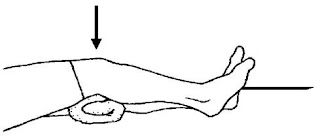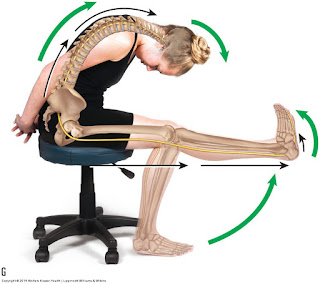Knee is the major weight bearing joint of the body. The knees are the shock absorbents of the body. Their role is to
absorb the force when we step, jump, run,
play, or do any movement with our legs. Hence, it is no rocket science to understand that if you are
overweight, your knees would be experiencing more shock and the heavy weight
causes further damage to the knees and the cartilage (A cushioned or shock absorbing layer in the knee joint) too. You will feel
surprised to know that the Knee joint feels five times the body weight at each
step. So, the more you weigh, the more pressure on the knee and the
quicker the cartilage wears out.
Osteoarthritis
can be extremely painful as the cartilage between the bones is depleted or in
severe cases gone, which makes the bones rub together. According to the theory
of BMI, Body Mass Index, people whose BMI is in the range of 25 to 30 are
considered either overweight or obese and they are under the constant threat of
becoming a victim of osteoarthritis.
Apart from this direct relation, there are two
other factors that connect heavy weight and knee pain;
·
The first one is Poor blood circulation. Overweight people
suffer from various problems due to improper blood circulation and one of them
is knee pain. Lack of blood rotation causes lack of oxygen and knee muscles
tend to get weak over the period of time.
·
The other factor is Leptin. It is the master hormone that
is released by fat cells of the body and many experts believe that it works in
favor of osteoarthritis.
Fortunately, exercise can help you lose weight and fat, gain
muscle, and keep your knees healthy! Here are some exercises which might help
you to get relieved from knee pain;
1.
Chair
sit-ups:
a. Sit on a chair without arm
rest
b. Get up from the chair with
feet flat over the floor
c. And sit again
d. Repeat this for 10-15 times
twice a day
2.
Leg raises:
a.
Lie flat
b.
Lift your leg by keeping knee
straight
c.
Put it down
d.
Repeat it for about 10-15 times
twice a day
3.
Knee press:
a.
Lie flat with both legs straight
b.
Place a pillow or towel roll
beneath the knee
c.
Press it for 5-10 seconds
d.
And then relax
e.
Repeat for 10-15 times twice a day
4.
Knee curls:
a. Lie flat on your stomach
b. Bend your knee
c. Then straighten it
d. Repeat this for 10-15 times twice a day
5.
Calf stretch:
a. Hold this position for 5-10 seconds
b. Repeat it for 10-15 times twice a day
6.
Hamstring
stretch:
a. Hold the position for 5-10 seconds
b. Repeat it for 10-15 times twice a day
Not
to do:
·
Running
·
Squatting
·
Cross leg sitting
Losing
weight can be the most effective way in order to provide a long life to the
joints. Other than this reducing weight can also provide amount of mobility to
the joints and it can also reduce the intensity of pain. Lower inflammation
level is again a great benefit of shedding weight. We often come across people
saying that they want to exercise and lose weight but they can’t because their
knee hurts a lot. So now it seems to be a never-ending cycle. Hence the easy
way out here is taking baby steps.











